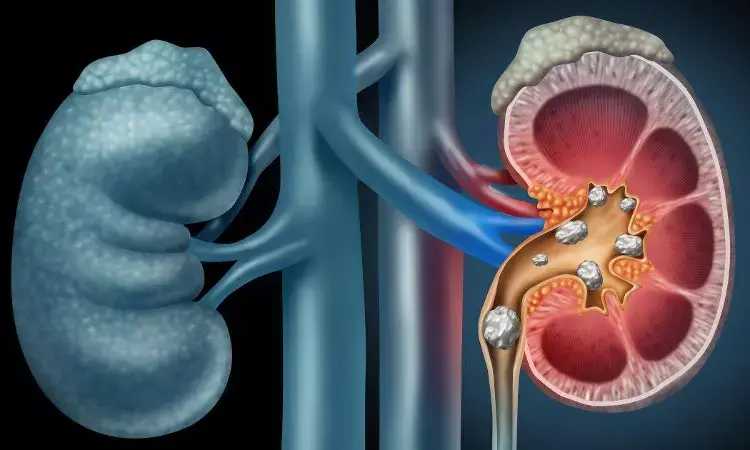- Home
- Medical news & Guidelines
- Anesthesiology
- Cardiology and CTVS
- Critical Care
- Dentistry
- Dermatology
- Diabetes and Endocrinology
- ENT
- Gastroenterology
- Medicine
- Nephrology
- Neurology
- Obstretics-Gynaecology
- Oncology
- Ophthalmology
- Orthopaedics
- Pediatrics-Neonatology
- Psychiatry
- Pulmonology
- Radiology
- Surgery
- Urology
- Laboratory Medicine
- Diet
- Nursing
- Paramedical
- Physiotherapy
- Health news
- Fact Check
- Bone Health Fact Check
- Brain Health Fact Check
- Cancer Related Fact Check
- Child Care Fact Check
- Dental and oral health fact check
- Diabetes and metabolic health fact check
- Diet and Nutrition Fact Check
- Eye and ENT Care Fact Check
- Fitness fact check
- Gut health fact check
- Heart health fact check
- Kidney health fact check
- Medical education fact check
- Men's health fact check
- Respiratory fact check
- Skin and hair care fact check
- Vaccine and Immunization fact check
- Women's health fact check
- AYUSH
- State News
- Andaman and Nicobar Islands
- Andhra Pradesh
- Arunachal Pradesh
- Assam
- Bihar
- Chandigarh
- Chattisgarh
- Dadra and Nagar Haveli
- Daman and Diu
- Delhi
- Goa
- Gujarat
- Haryana
- Himachal Pradesh
- Jammu & Kashmir
- Jharkhand
- Karnataka
- Kerala
- Ladakh
- Lakshadweep
- Madhya Pradesh
- Maharashtra
- Manipur
- Meghalaya
- Mizoram
- Nagaland
- Odisha
- Puducherry
- Punjab
- Rajasthan
- Sikkim
- Tamil Nadu
- Telangana
- Tripura
- Uttar Pradesh
- Uttrakhand
- West Bengal
- Medical Education
- Industry
Removal of small asymptomatic kidney stones cuts down their recurrence significantly: NEJM

A new study conducted by Mathew D. Sorensen and colleagues found that the frequency of recurrence was lower when tiny, asymptomatic kidney stones were removed during surgery to remove ureteral or contralateral kidney stones. The quantity of post-operative trips to the emergency room was comparable. The findings of this study were published in The New England Journal of Medicine.
It is uncertain if endoscopic kidney stone removal of tiny (≤6 mm), asymptomatic kidney stones is beneficial. According to current recommendations, the urologist and the patient make these choices. Observation is preferred in several retrospective investigations and prospective research using earlier, non-endoscopic technologies. However, published data shows that within 5 years of surgery, almost 50% of minor renal stones that were left behind when bigger stones were removed, produced subsequent clinical occurrences. Therefore, the purpose of this study was to determine if kidney stones would return following endoscopic removal.
In a randomized, multicenter, controlled trial, patients were divided into the treatment group (38 patients) and the control group (35 patients) during the endoscopic removal of ureteral or contralateral kidney stones (control group). The main result was relapse, which was determined by subsequent trips to the ER, operations, or the development of new stones.
The key findings of this study were as follows:
1. The therapy group took more time to revert than the control group did after a mean follow-up of 4.2 years.
2. The treatment group's limited mean (SE) time to relapse was 75% longer than the control group.
3. With 16% of patients in the treatment group experiencing a relapse as opposed to 63% of those in the control group, the probability of recurrence was 82% lower in the treatment group than in the control group.
4. A median of 25.6 minutes was added to the surgery's time by the treatment.
5. Within two weeks of surgery, five patients in the therapy group and four in the control group visited the emergency room.
6. Ten patients in the control group and eight patients in the treatment group both reported passing renal stones.
Reference:
Sorensen, M. D., Harper, J. D., Borofsky, M. S., Hameed, T. A., Smoot, K. J., Burke, B. H., Levchak, B. J., Williams, J. C., Jr., Bailey, M. R., Liu, Z., & Lingeman, J. E. (2022). Removal of Small, Asymptomatic Kidney Stones and Incidence of Relapse. In New England Journal of Medicine (Vol. 387, Issue 6, pp. 506–513). Massachusetts Medical Society. https://doi.org/10.1056/nejmoa2204253
Neuroscience Masters graduate
Jacinthlyn Sylvia, a Neuroscience Master's graduate from Chennai has worked extensively in deciphering the neurobiology of cognition and motor control in aging. She also has spread-out exposure to Neurosurgery from her Bachelor’s. She is currently involved in active Neuro-Oncology research. She is an upcoming neuroscientist with a fiery passion for writing. Her news cover at Medical Dialogues feature recent discoveries and updates from the healthcare and biomedical research fields. She can be reached at editorial@medicaldialogues.in
Dr Kamal Kant Kohli-MBBS, DTCD- a chest specialist with more than 30 years of practice and a flair for writing clinical articles, Dr Kamal Kant Kohli joined Medical Dialogues as a Chief Editor of Medical News. Besides writing articles, as an editor, he proofreads and verifies all the medical content published on Medical Dialogues including those coming from journals, studies,medical conferences,guidelines etc. Email: drkohli@medicaldialogues.in. Contact no. 011-43720751


